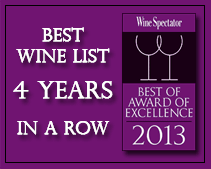Before a wine tasting takes place there are a number of preparations which need to be considered, which will enhance the experience. Lacking wine education courses and even wine seminars are rare in Manila, Pampanga Angeles City, Cebu and other major cities of Philippines, wine lovers have to rely on reading and self-studies to further their knowledge of wine.
November 16, 2010
Philippines Wine Shop Clark Wine Center is pleased to share with you articles, news and information about wine, wine events, wine tasting and other topics related to wine and the appreciation of wine.
Timing – In general the best time of day for a wine tasting is at the point at which a person feels most “alert.” This will vary from person to person however, avoid tastings later in the day once the senses have become dulled or the taster is tired. Secondly one should avoid tastings, after eating strong foods or cleaning one’s teeth. Doing so will taint the sensory experience of the wines to be tasted. Glassware – Select an appropriate glass for the wine to be tasted. There are an array of good quality wine glasses available, Riedel for instance produces a number of varietal specific wine glasses. If one does not have such specific glasses available, choose a general good quality glass with enough room to both swirl the wine and get one’s nose into the glass. Decanting – Many wines will benefit from spending a period of time in a decanter before tasting. This is especially the case with aged reds and vintage wines such as port. Not only will decanting allow the wine to aerate, improving the taste, decanting will also exclude sediment from the glass. Tasting wine and creating consistent tasting notes is not difficult however, if it is to be done well, then a consistent approach needs to be taken. Every taster will develop their own individual process, below is a recommended process which will give a good tasting experience and consistent notes.
Presentation – Many omit this stage, especially if a blind tasting is to take place. There is however considerable pleasure to be gained from observation of the bottle, consider the shape and style of the bottle and label. Also note if there are any additions such as awards or indications of designated origin status. Colour – At its most basic level wine is red, white or rose. The colour however, can be described with much greater levels of accuracy. For instance, a red wine may be “bloody” or “tawny” in colour. On the other hand, a white wine may be a “golden buttery” colour or more “straw like” in colour.First nose – Once the wine has been poured, leave the wine still and take a number of sniffs, both large and small. Make a list of the elements detected. In both detecting scents and flavours an effective method, is to consider a list of common elements and then identify which are present. Second nose – Now swirl the wine in the glass for a good few seconds and again take a number of sniffs. The nose detected on a wine which has been aerated by the swirling, may be radically different to that of the first experience. Again, run through a list of common elements and make a note of what is found. Tasting – Take a good amount of the wine into the pallet and swirl around the mouth. In the first instance take note of the flavours present on the pallet. Again running through a list may help to identify elements with consistency. At the same time one should note other important elements including, acidity, sweetness and texture. Finally, as the wine is swallowed note the finish. The finish considers what after taste is left and how long the taste of the wine remains for, after swallowing.
Source: http://www.suite101.com/content/how-to-taste-wine-like-a-professional-a282384
Clark Wine Center was built in 2003 by Hong Kong-based Yats International Leisure Philippines to become the largest wine shop in Philippines supplying Asia’s wine lovers with fine vintage wines at attractive prices. Today, this wine shop in Clark Philippines offers over 2000 selections of fine wines from all major wine regions in the world. As a leading wine supplier in Philippines, Pampanga’s Clark Wine Center offers an incomparable breadth of vintages, wines from back vintages spanning over 50 years. Clark Wine Center is located in Pampanga Clark Freeport Zone adjacent to Angeles City, just 25 minutes from Subic and 45 minutes from Manila.
Wines from Burgundy, Bordeaux, Rhone, Loire, Spain, Portugal, Germany, Austria, Alsace, USA, Australia, New Zealand, Italy, South Africa, Chile and Argentina etc. are well represented in this Clark Wine Shop.
For more information, email Wine@Yats-International.com or visit http://www.ClarkWineCenter.com
Getting to this wine shop in Pampanga Angeles City Clark Freeport Zone Philippines from Manila
Getting to the Clark Wine Center wine shop from Manila is quite simple: after entering Clark Freeport from Dau and Angeles City, proceed straight along the main highway M A Roxas. Clark Wine Center is the stand-along white building on the right, at the corner A Bonifacio Ave. From the Clark International Airport DMIA, ask the taxi to drive towards the entrance of Clark going to Angeles City. From Mimosa, just proceed towards the exit of Clark and this wine shop is on the opposite side of the main road M A Roxas.
You can skip to the end and leave a response. Pinging is currently not allowed.





